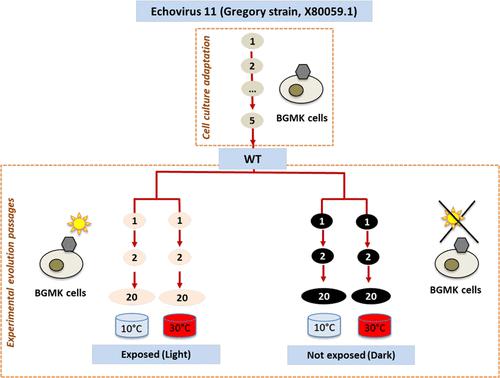Viruses could become harder to kill

Tamar Kohn, head of EPFL's Environmental Chemistry Laboratory, and scientist Anna Carratalà conduct experiments on enteroviruses © Alain Herzog
A recent EPFL study shows that pathogenic viruses may be able to develop resistance to warm temperatures and some types of disinfectant. That – combined with global warming and more frequent and longer heat waves – could make it even harder to keep them from spreading.
We could soon see the day when people have to think twice before taking a swim in lakes hitherto considered healthy. That’s because some of the pathogenic viruses on the water’s surface could evolve to become more resistant, as an indirect consequence of global warming and the increase in the number of heat waves and record-breaking temperatures.
Most of the pathogenic viruses in lakes are naturally rendered harmless by sunlight, warm temperatures and bacteria normally present in the water. But a team of scientists at EPFL’s Environmental Chemistry Laboratory (LCE), within the School of Architecture, Civil and Environmental Engineering (ENAC), has found that some human enteroviruses – which can cause gastro-intestinal infections or severe diseases such as meningitis, and are found in feces, meaning they could make their way into wastewater effluent – may have the capacity to adapt to higher water temperatures. The study was led in collaboration with a scientist from the Swiss Federal Institute of Aquatic Science and Technology, Eawag.
Resistant to disinfectants
In their study, the research team created four human enterovirus populations by incubating samples in lake water at 10°C and 30°C in both the presence and the absence of sunlight. They found that the viruses surviving in the warmer water became increasingly resistant to temperature, unlike those in the colder water.

The scientists’ findings have just been published in Environmental Science and Technology.
A consequence of globalization
What’s more, the chances of resistant viruses traveling from one world region to another are growing as a result of globalization, since people and goods (like fruits and vegetables), which could potentially be contaminated, are moving about more readily. For example, a pathogen that is perfectly adapted to the warm water of an equatorial region could inadvertently be carried into Switzerland, where it is likely to survive for a long time because it would be resistant to the ambient temperatures. This would heighten the risk of the virus spreading a benign disease or a more serious one like polio.
“The other implication of our study is that if temperatures rise, there could be more world regions where viruses develop this capability to resist,” says Kohn. That wouldn’t be a direct consequence of global warming – because even a 3°C rise would be too small to make a difference – but of an increase in the number of long heat waves. The next step for the research team will be to test their findings in a series of field experiments.
Swiss National Science Foundation
Anna Carratalà, Virginie Bachmann, Timothy R. Julian, and Tamar Kohn, "Adaptation of Human Enterovirus to Warm Environments Leads to Resistance against Chlorine Disinfection", Environmental Science and Technology, september 2020.
Swiss Federal Institute of Aquatic Science and Technology (Eawag) : https://www.eawag.ch/en/
